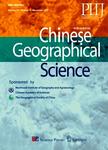Dynamics and Responses of Vegetation to Climatic Variations in Ziya- Daqing Basins, China
Dynamics and Responses of Vegetation to Climatic Variations in Ziya-Daqing Basins, China作者机构:Key Laboratory of Water Cycle and Related Land Surface Processes Institute of Geographical Sciences and Natural Resources Research Chinese Academy of Sciences Beijing 100101 China University of Chinese Academy of Sciences Beijing 100049 China
出 版 物:《Chinese Geographical Science》 (中国地理科学(英文版))
年 卷 期:2016年第26卷第4期
页 面:478-494页
核心收录:
学科分类:0303[法学-社会学] 07[理学] 0708[理学-地球物理学] 0705[理学-地理学] 0813[工学-建筑学] 0704[理学-天文学] 0833[工学-城乡规划学] 0713[理学-生态学]
基 金:Under the auspices of National Natural Science Foundation of China(No.41471026,31171451) Strategic Science and Technology Program in the Thirteenth Five-Year Plan of Institute of Geographical Sciences and Natural Resources Research,Chinese Academy of Sciences(No.2012ZD003)
主 题:Normalized Difference Vegetation lndex (NDVI) phenology climate variation direct effect indirect effect
摘 要:Examining the direct and indirect effects of climatic factors on vegetation growth is critical to understand the complex linkage between climate change and vegetation dynamics. Based on the Moderate Resolution Imaging Spectroradiometer(MODIS) Normalized Difference Vegetation Index(NDVI) data and meteorological data(temperature and precipitation) from 2001 to 2012, the trend of vegetation dynamics were examined in the Ziya-Daqing basins, China. The path analysis was used to obtain the information on the relationships among climatic factors and their effects on vegetation growth. It was found that the trends of growing season NDVI were insignificant in most plain dry land, while the upward trends were significant in forest, grass and dry land in Taihang Mountains. According to the path analysis, in 23% of the basins the inter-annual NDVI variation was dominated by the direct effect of precipitation, in 5% by the direct effects of precipitation and temperature, and in less than 1% by the direct effect of temperature or indirect effects of these two climatic factors. It indicated that precipitation significantly affected the vegetation growth in the whole basins, and this effect was not regulated by temperature. Precipitation increase(especially in July, August and September) was favorable to greenness enhancement. Summer temperature rising showed negative effect on plant productivity enhancement, but temperature rise in April was beneficial for the vegetation growth. When April temperature increases by 1℃, the onset date of greenness for natural vegetation will be 2 days in advance. There was a lag-time effect of precipitation or temperature on monthly NDVI for all land use types except grass.



